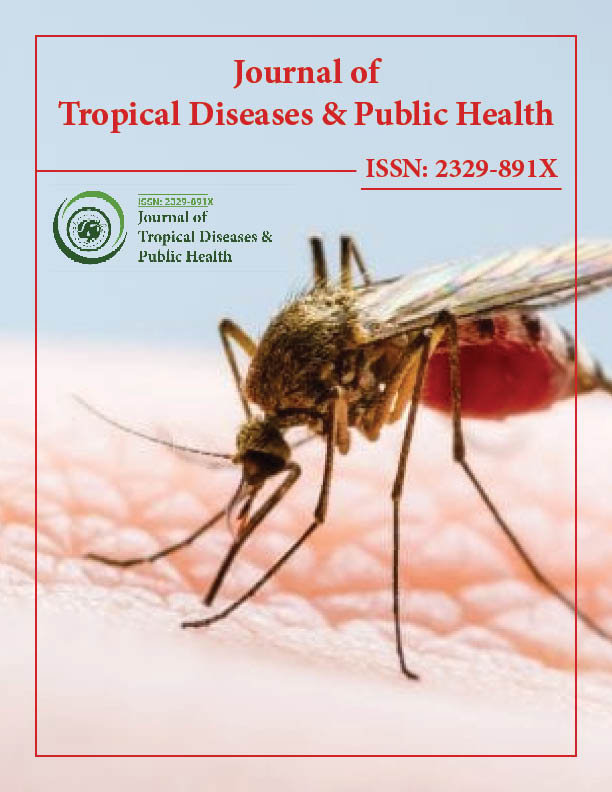Indexed In
- Open J Gate
- Academic Keys
- ResearchBible
- China National Knowledge Infrastructure (CNKI)
- Centre for Agriculture and Biosciences International (CABI)
- RefSeek
- Hamdard University
- EBSCO A-Z
- OCLC- WorldCat
- CABI full text
- Publons
- Geneva Foundation for Medical Education and Research
- Google Scholar
Useful Links
Share This Page
Journal Flyer

Open Access Journals
- Agri and Aquaculture
- Biochemistry
- Bioinformatics & Systems Biology
- Business & Management
- Chemistry
- Clinical Sciences
- Engineering
- Food & Nutrition
- General Science
- Genetics & Molecular Biology
- Immunology & Microbiology
- Medical Sciences
- Neuroscience & Psychology
- Nursing & Health Care
- Pharmaceutical Sciences
Opinion Article - (2025) Volume 13, Issue 1
The Role of Vector Control and Immunization in Yellow Fever Prevention Efforts
Dong Buish*Received: 24-Feb-2025, Manuscript No. JTD-25-29272; Editor assigned: 26-Feb-2025, Pre QC No. JTD-25-29272; Reviewed: 12-Mar-2025, QC No. JTD-25-29272; Revised: 19-Mar-2025, Manuscript No. JTD-25-29272; Published: 26-Mar-2025, DOI: 10.35241/2329-891X.25.13.468
Description
Yellow fever is a viral hemorrhagic disease transmitted primarily by infected mosquitoes. It is caused by the Yellow Fever Virus (YFV), a member of the Flaviviridae family, and is endemic in tropical and subtropical regions of Africa and South America. The disease gets its name from the jaundice yellowing of the skin and eyes that affects some patients due to liver damage. Despite the availability of a highly effective vaccine, yellow fever continues to pose a significant public health threat, especially in areas where vaccination coverage is low and vector control is inadequate.
Yellow fever has a wide range of clinical presentations, from mild to severe. The incubation period is typically 3 to 6 days. In the initial or acute phase, symptoms may include sudden onset of fever, chills, severe headache, back pain, muscle aches, nausea, vomiting, fatigue, and loss of appetite. Most patients recover after this phase, but approximately 15% of cases progress to a more severe toxic phase within 24 hours. This second phase is marked by high fever, jaundice, abdominal pain, bleeding from the mouth, nose, eyes, or stomach and kidney failure. Half of the patients who develop this severe form die within 7 to 10 days, making yellow fever one of the most lethal viral diseases for which there is a vaccine.
There is no specific antiviral treatment for yellow fever. Management is supportive and aims to relieve symptoms, ensure adequate hydration, and treat complications such as liver and kidney failure. In severe cases, hospitalization is essential, and patients may require intensive care to monitor vital signs and manage bleeding and organ dysfunction. Early detection and supportive care can reduce mortality, but prevention remains the most effective strategy.
Vaccination is the cornerstone of yellow fever prevention. The yellow fever vaccine is a live attenuated virus vaccine, highly effective and typically providing lifelong immunity after a single dose. It is included in routine childhood immunization programs in endemic countries and is also recommended for travelers to at-risk areas. International health regulations require proof of yellow fever vaccination for entry into certain countries, as documented by the International Certificate of Vaccination or Prophylaxis (ICVP).
Despite the availability of a vaccine, outbreaks still occur due to gaps in immunization coverage, urbanization, deforestation, and increased human mobility. Large outbreaks in Angola and the Democratic Republic of Congo in 2016, and more recent ones in Brazil, highlight the challenges of maintaining adequate vaccine coverage and rapid response capacity. Global vaccine stockpiles have been developed to respond to outbreaks, but limited production capacity can delay mass vaccination campaigns during emergencies.
Vector control is another important measure to prevent yellow fever, especially in urban settings. This includes reducing mosquito breeding sites, using insecticides, and promoting personal protective measures such as mosquito nets and repellents. Public health education campaigns are critical for raising awareness about the disease, symptoms, transmission, and prevention strategies.
Conclusion
Yellow fever remains a serious public health issue despite the existence of an effective vaccine. The disease can cause devastating outbreaks with high mortality if left unchecked. Controlling yellow fever requires a comprehensive approach, including widespread vaccination, vector control, effective surveillance, and strong health systems. Global cooperation and sustained commitment are essential to eliminate yellow fever epidemics and reduce the burden of this preventable disease.
Citation: Buish D (2025). The Role of Vector Control and Immunization in Yellow Fever Prevention Efforts. J Trop Dis. 13:468.
Copyright: © 2025 Buish D. This is an open-access article distributed under the terms of the Creative Commons Attribution License, which permits unrestricted use, distribution and reproduction in any medium, provided the original author and source are credited.

